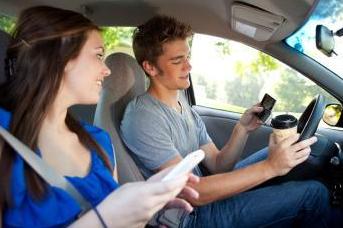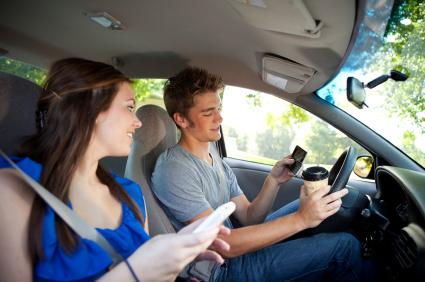 Teenagers may think and act like they’re indestructible yet the statistics say otherwise, especially when they get behind the wheel.
Teenagers may think and act like they’re indestructible yet the statistics say otherwise, especially when they get behind the wheel.
Vehicle crashes are the number one cause of death for teenagers in America. Mile for mile, teenagers are involved in three times as many fatal crashes as all other drivers, according to the National Highway Traffic Safety Administration..
Research shows which behaviors contribute to teen-related crashes. Inexperience and immaturity combined with speed, drinking and driving, not wearing seat belts, distracted driving (cell phone use, loud music, other teen passengers, etc.), drowsy driving, nighttime driving and other drugs are all use aggravating factors.
This is why the U.S. Department of Transportation and the NHTSA are urging parents and caregivers to set and enforce safe driving ground rules for their teens.
Parental involvement is a key component in the development of safe young drivers. While the number of motor vehicle crashes has declined significantly in recent years, safe driving habits remain essential, since motor vehicle crashes remain the leading cause of death for teens in America.
“As a father of four, I know it may seem that children, and teenagers in particular, aren’t always listening to what we say, but they are watching what we do,” Transportation Secretary Ray LaHood said in a statement. “By highlighting the dangers associated with driving and reinforcing responsible driving habits and decision making, parents can help mold their teens into safe drivers.”
NHTSA data show that 1,963 young drivers between the ages of 15 to 20 died and an additional 187,000 young drivers were injured in motor vehicle crashes in 2010. One out of ten drivers involved in a fatal crash was someone between the ages of 15 and 20.
“Immaturity, inexperience and a penchant for risk-taking are the major reasons for high crash and fatality rates among teen drivers,” NHTSA Administrator David Strickland said in a statement. “In addition to comprehensive state graduated driver licensing systems and strong bans on teen cell phone use and texting while driving, parents who are involved throughout the learning-to-drive process are vital in creating safe and prepared young drivers.”
NHTSA offers the following advice to parents and caregivers of teen drivers:
Learn and follow state Graduated Driver Licensing laws, which have been shown to reduce teen crashes. All states have three-stage GDL programs (learner’s permit, intermediate or provisional license, full licensure). During the process, restrictions are put in place so young drivers can gain critical driving experience in lower-risk situations and a gradual introduction to more complex tasks through controlled exposure to high-risk situations.
Create and sign a parent-teen driving contract – A parent-teen driving contract sets ground rules and creates and explains the consequences of breaking those rules. This ensures teen accountability, ownership of expectations, and an understanding that driving is a privilege that can be revoked.
Prohibit the use of electronic devices while driving – Driving while talking on the phone or while texting is risky for all drivers, but especially for teens. In 2010, 368 teen drivers ages 15 to 19 involved in fatal crashes were distracted, accounting for 13 percent of all fatal distraction affected crashes. Use of electronic devices while driving is also forbidden by law in many states for all drivers. Parents and caregivers should forbid the use of portable electronic devices while driving and also model safe behavior by turning off their cell phones while behind the wheel. Encourage your teen to speak up when someone is using an electronic device while driving. A recent NHTSA survey found that young people were less likely than other age groups to say something to a driver who made them feel unsafe.
Limit teen passengers and night driving – A NHTSA analysis found teen drivers were two-and-a-half times more likely to engage in one or more potentially risky behaviors when driving with one teenage peer compared to when driving alone. That risk increased with multiple passengers.
In 2010, 1,326 passengers in young drivers’ vehicles were killed in crashes involving young drivers. Most nighttime fatal crashes of young drivers occur between 9 p.m. and midnight. NHTSA recommends a maximum of one passenger in the car with teens at all times (no passengers if required by state GDL law) and nighttime driving restrictions starting no later than 10 p.m.
Encourage teens to always buckle up – Wearing a seat belt is the most effective protection for drivers and passengers in the event of a crash. In 2010, three out of five 16- to 20-year-old occupants killed in passenger vehicles were not wearing seatbelts.
Talk to your teen about alcohol – All states and the District of Columbia have 21-year-old minimum-drinking-age laws. In 2010, 22 percent of the young drivers involved in fatal crashes were drinking. Talk to your teen about the risks of both drinking and driving, and of riding with an impaired driver.
Establish regular supervised driving and feedback sessions – Most parents and caregivers are unaware of the number of hours of supervised driving teens must complete as part of the intermediate phase of their state’s GDL program. Parents should refer to the minimum supervised driving requirements required by their state, but are also encouraged to continue to drive with their teen in a variety of driving situations and environments, such as at night, in inclement weather and in high traffic situations even beyond what’s required. More practice will only make them better drivers. Set aside a regular time to discuss a teen’s progress, experiences, concerns and achievements.












